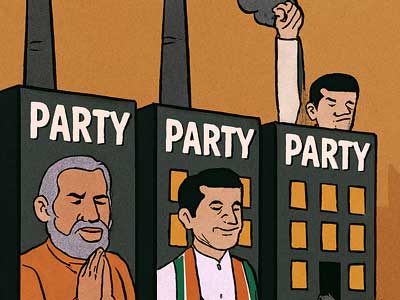Opposition leaders and left-wing thinkers may not have been impressed by the recently concluded Maha Kumbh Mela, but the successful conclusion of this event in Prayagraj has not only enhanced the stature of Uttar Pradesh Chief Minister Yogi Adityanath but also demonstrated India's ability to blend tradition with modernity.
Maha Kumbha Mela, deeply rooted in India's spiritual heritage, has emerged as a multi-faceted event with important political, economic and cultural implications. "This Maha Kumbh, held after 144 years, became a wonderful confluence of spirituality, political image, administrative efficiency, police management, good use of modern technology with good economics”, according to social activist Mukta Gupta.
Read in Hindi: महाकुंभ ने छोड़ी अध्यात्म, अर्थव्यवस्था व सांस्कृतिक एकता की अद्भुत छाप
For Yogi Adityanath in Uttar Pradesh and Prime Minister Narendra Modi at the national level, the event reaffirmed their commitment to preserving India's cultural heritage. Despite the stampede deaths, the Kumbh bathing by more than 67 crore people is considered a rare event that has surprised the world. The seamless execution of the event demonstrated strong administrative capabilities, with crowd management, security measures and logistics strategies ensuring a memorable experience for millions of devotees.
The Maha Kumbh Mela catalysed local economies with a surge in demand for traditional handicrafts, local cuisine and religious artefacts. The hospitality, transport and logistics sectors flourished, creating temporary employment opportunities and adding to state coffers through tourism and taxes. Investments in infrastructure such as better roads, sanitation and healthcare promise long-term benefits for the region.
The event fostered a sense of equality and collective identity, transcending caste, class and gender barriers. Pilgrims from different regions and cultures gathered and enriched India’s cultural fabric through the exchange of traditions and practices. Saints, scholars and spiritual leaders facilitated dialogues that promoted mutual understanding and unity.
The Kumbh Mela, recognised by UNESCO as an intangible cultural heritage, attracted international tourists and enhanced India’s global cultural footprint. Social media and digital platforms further extended its reach and documented its grandeur and cultural narratives for a global audience. For social content creators, the event proved to be beneficial and helped increase its popularity.
Rooted in ancient texts such as the Puranas, the Kumbh Mela traces its origin to a mythological event where drops of the nectar of immortality fell at four places – Prayagraj, Haridwar, Nashik and Ujjain. This rich history adds layers of spiritual and cultural depth to the event.
While the event brought many benefits, it also posed challenges, such as environmental degradation and waste management. To mitigate these issues in the future, sustainable practices and advanced technology can be incorporated, ensuring a balance between tradition and modernity.
According to Prof Paras Nath Chaudhary, "Among other things, the Maha Kumbh has sent a message to the world that India is no longer a country of poor people. Crores of people came from rural areas, spending thousands of rupees to participate in the religious event. Small villages rushed to Prayagraj. It was a sight to behold. India was spending a lot to fulfill its spiritual obligations. A young economist from Darbhanga says that Hindu India spent a lot on the Maha Kumbh. The amount spent was equal to the annual budget of many countries in Europe. This means that India is not only not immersed in poverty, but is also making a serious attempt to make a large part of prosperity common”.
The Maha Kumbh Mela serves as a powerful political symbol of unity and cultural nationalism in India. It highlighted the government's commitment to preserving and promoting India's rich spiritual heritage while promoting communal harmony among different religious groups. Social activist Dr Debashish Bhattacharya said, "With the gathering of large numbers of people, it reinforces the idea of a collective national identity that transcends regional and communal divisions. Politicians often take advantage of this opportunity to connect with Hindus by showcasing their dedication to cultural values. Ultimately, the Kumbh Mela also sends a political message of inclusiveness, spirituality and the importance of communal engagement in shaping India's socio-political landscape”.
After returning from the Kumbh Mela, TP Srivastava, an intellectual from Bihar, said, "The Maha Kumbh Mela is a testimony to India's ability to strike a balance between spirituality, economic development and cultural unity. It is not just a religious gathering but a cornerstone of India's socio-economic and cultural landscape, with far-reaching effects that reverberate nationally and globally”.


















Related Items
India’s deep dark fraud economy unveiled…
Private sector has become the beating engine of India’s economy
Temple economy emerging as a parallel billion-dollar sector